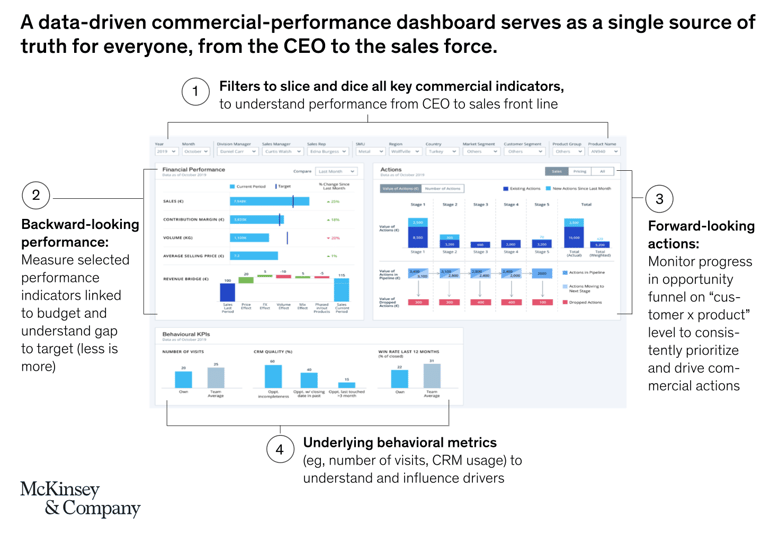Does Your B2B Need a Data Cockpit? 5 Takeaways From McKinsey’s Article on Improving B2B Sales Performance

McKinsey recently published a new Sales & Marketing Insights article called Commercial performance cockpit: A new era for data-driven steering. It’s about how business-to-business (B2B) leaders are starting to use data to enhance sales performance. A key element of the approach is a ‘data cockpit.’ I hadn’t seen this term before, but I liked the concept, being the child of a commercial pilot. What’s more, every day I see B2B leaders using data more intensively and intelligently to drive all aspects of their businesses, much like a pilot uses the tools in a cockpit to drive a plane.

In true McKinsey style, the article outlines a high-level approach but stops short of the nitty-gritty details that might scare readers off.
5 key takeaways:
1. Companies need a centralized unit – a cockpit – to integrate data, derive insights, and translate those insights into concrete frontline actions. When B2B companies do this well, they can capture 15% more EBITDA growth than competitors and radically improve sales ROI.
2. The best data cockpits have three elements and B2B companies can do well by adopting them if they haven’t already:
- Sales targets developed with the help of analytics,
- Data-driven performance dashboards, and
- An action-oriented performance culture.
4. The heart of a powerful data cockpit is a highly automated and easy-to-understand dashboard. This sounds easy to create but any experienced executive knows there’s a lot of systems integration work that goes into achieving a solid dashboard.
This graphic from the article tells the story best:
5. McKinsey even provides a helpful ‘how to get going’ outline. They suggest:- Creating a ‘commercial operations hub’ team with a well-defined scope to be responsible for the initiative and establishing a baseline, to know what current performance is,
- Designing and piloting a ‘minimum viable cockpit’ that is not focused on perfection, but on getting started and continuing momentum, and
- Be prepared to test and adjust as you go.
From my own experience, the pointers on getting off the ground are the most important elements in the article. I have seen too many B2B companies stall at the opportunity to deliver meaningful performance improvement because they are scared to start with an imperfect solution. Doing so is a huge missed opportunity.
If McKinsey suggests a ‘minimum viable solution’ as a starting point, we agree and the vast majority of B2B companies could benefit from starting here. Taking the initiative and getting started is the essential truth and value here.
Need help starting a data cockpit? Contact us to learn about how Mezzanine Growth can help your B2B better use your data and enhance sales performance.
.png?width=2361&height=488&name=Mezzanine%20Logo_Horiz_RGB_on%20blue%20(1).png)


